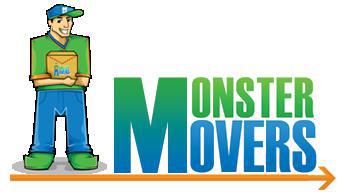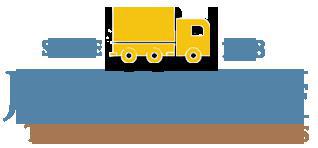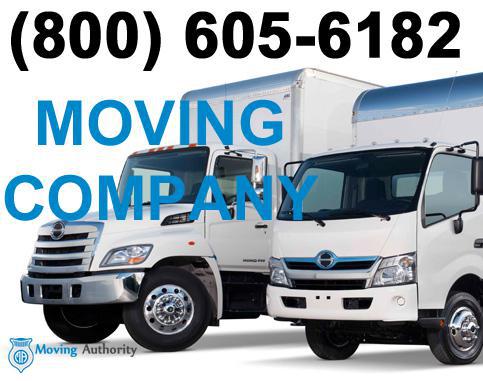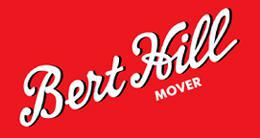LAST REVIEW
<QuerySet [<Review: Ophelia, Great choice if>, <Review: Bella Fiorella, Great movers. U>, <Review: Andrew B, I've used Monst>, <Review: Atticus Chambers, I interviewed d>, <Review: Billy Walsh, Overall great m>, <Review: Maddie, Excellent move >, <Review: Sam, We used the mov>, <Review: Liza, Great movers in>, <Review: Casey, From beginning >, <Review: Tran, Thank you to th>]>
5
1
5
Reviewed <QuerySet [<Review: Ophelia, Great choice if>, <Review: Bella Fiorella, Great movers. U>, <Review: Andrew B, I've used Monst>, <Review: Atticus Chambers, I interviewed d>, <Review: Billy Walsh, Overall great m>, <Review: Maddie, Excellent move >, <Review: Sam, We used the mov>, <Review: Liza, Great movers in>, <Review: Casey, From beginning >, <Review: Tran, Thank you to th>]> times,
customer satisfaction.
United States
Massachusetts
Amesbury
Thank you to the monster movers they did a great job - no damages and fast
LAST REVIEW
<QuerySet [<Review: Rex Kelly, I had some vint>, <Review: augustus love, Roy's Moving ha>, <Review: mayra rosalinda, After having va>, <Review: Odell Weiser, Roy's moving is>, <Review: Susann Kate, You cannot go w>, <Review: Richard Dias, Roy's moving is>, <Review: Catherine Ernest, Roy's moving wa>, <Review: Celina Nadine, I highly recomm>, <Review: Darlene Moseley, The movers were>, <Review: Darlene Moseley, The movers were>]>
5
1
5
Reviewed <QuerySet [<Review: Rex Kelly, I had some vint>, <Review: augustus love, Roy's Moving ha>, <Review: mayra rosalinda, After having va>, <Review: Odell Weiser, Roy's moving is>, <Review: Susann Kate, You cannot go w>, <Review: Richard Dias, Roy's moving is>, <Review: Catherine Ernest, Roy's moving wa>, <Review: Celina Nadine, I highly recomm>, <Review: Darlene Moseley, The movers were>, <Review: Darlene Moseley, The movers were>]> times,
customer satisfaction.
United States
Massachusetts
Waltham
The movers were great and the bill was true to their initial estimate. They were well trained, professional, sociable and energetic. They arrived on time with all equipment necessary, including floor runners for our wooden floors. Happy to have hired Roy's moving for my move.
LAST REVIEW
<QuerySet [<Review: Kathryn Gill, Sloppy work, po>, <Review: Jake Powers, purchasing onli>, <Review: Jonathan Buck, Incompetent lab>, <Review: Gea, No Communicatio>]>
5
1
2
Reviewed <QuerySet [<Review: Kathryn Gill, Sloppy work, po>, <Review: Jake Powers, purchasing onli>, <Review: Jonathan Buck, Incompetent lab>, <Review: Gea, No Communicatio>]> times,
customer satisfaction.
United States
Massachusetts
Canton
No Communication - awful customer service, no answers and a week later I am still waiting on furniture that was canceled during the delivery window!
LAST REVIEW
<QuerySet [<Review: Robert D, Cash well spent>, <Review: Marie R, The movers were>, <Review: Ahi Dabest, We asked for 4 >, <Review: Jodi M, I spoke with Al>]>
5
1
3
Reviewed <QuerySet [<Review: Robert D, Cash well spent>, <Review: Marie R, The movers were>, <Review: Ahi Dabest, We asked for 4 >, <Review: Jodi M, I spoke with Al>]> times,
customer satisfaction.
United States
Massachusetts
Swansea
I spoke with All My Sons moving of Rhode Island to move the heavier items in my apt (couch, kitchen table, bureaus, side tables, queen mattress, box spring, and frame, etc) I spoke with the company on March 16,2020 I was told I would pay $129/hr plus 90 minutes travel time. I was immediately charged a $100. deposit. My move was scheduled for March 26, 2020. On March 25, Mike called to confirm the move for the following day and that the movers would be arriving by 12pm and would call when they were 45 minutes away. On the 26th because I have a weird door with a drain in front of it, and a counter set at it, A relative and I carried some of the items outdoors to help them out (I have an injured shoulder and leg) So 12pm came and I waited... and waited... and waited some more, at 4:25pm when I had not heard anything I called them. The guy on the phone told me that "two drivers had called in sick, they were just finishing up on the first move and would be there within a half hour (this seemed odd as it was so late) so I waited...and waited. No one showed up. At 6:15pm I called again and was told the movers were "off the clock" and would not be coming after all. They then asked me what my schedule was and told me they would make me a "priority", but since I was told that when I first contracted them I NO LONGER TRUSTED THEM TO KEEP THEIR WORD! so I chose to rent a Uhaul and I moved myself with the help of a dolly, reinjuring myself but I got it done. The Uhaul and dolly cost me less than $60. and I paid myself $25/hr for the 4 hrs it took me. Renting that Uhaul was the best decision because in the meanwhile I had read all the NEGATIVE reviews about ALL MY SONS moving, and I am sure that their final bill would have been padded several hundred dollars above the $400. I was quoted. If you have to move do yourself a favor and read the consumer affairs and yelp reviews about them. They don't communicate, they overcharge, property is broken or missing. As of right now, I don't have my $100. back but I feel confident court will get it back for me. With this company it is absolutely CAVEAT EMPTOR! Even if you are desperate because you have to move, put them at the bottom of your list.
LAST REVIEW
<QuerySet [<Review: Kristen L, Moved from a 32>, <Review: Chris L, I would give th>, <Review: Carol P., Five Stars!!! >, <Review: Alison, We couldn't be >]>
5
1
4
Reviewed <QuerySet [<Review: Kristen L, Moved from a 32>, <Review: Chris L, I would give th>, <Review: Carol P., Five Stars!!! >, <Review: Alison, We couldn't be >]> times,
customer satisfaction.
United States
Massachusetts
Pembroke
We couldn't be happier with the service we received from Vanguard. We recently had to move from Cambridge, MA to Santa Fe, NM (in the middle of the pandemic, no less!) We weren't sure if a local company would be able to handle this cross-country move, but Vanguard responded to our query within hours. Since in-house visits were impossible because of COVID, Vanguard based their estimate on a FaceTime tour of our apartment and things (the only company to do so; this meant they were also more confident in and committed to their estimate than other moving services we considered). The quote we received was very reasonable and lower than other companies we'd looked at. Tom and his crew showed up on time (wearing PPE) and were extremely professional and friendly. Vanguard was communicative with us throughout the move, they arrived on schedule, and not a single item of ours was damaged in the 35-hour drive. And as a final (unheard of!) surprise, the cost we paid ended up being a little lower than the estimate, since packing and unpacking took less time than they'd predicted. I would recommend this company to anyone with enthusiasm -- they combine the communication and care of a local business with the infrastructure and capacity of a much larger company. Thank you, Tom and Julie, for all your help! You made what could have been a very stressful move so easy for us.
LAST REVIEW
<QuerySet [<Review: Jonathan W, In addition to >, <Review: Carlos D., My wife and I w>, <Review: Benjamin Hebert, I hired Burgoff>, <Review: Elise, Scratched up an>]>
5
1
4
Reviewed <QuerySet [<Review: Jonathan W, In addition to >, <Review: Carlos D., My wife and I w>, <Review: Benjamin Hebert, I hired Burgoff>, <Review: Elise, Scratched up an>]> times,
customer satisfaction.
United States
Massachusetts
Hatfield
Scratched up and dented my hardwood floors. His workers were on their phone texting for a lot of the time. I got an eye infection and corneal abrasion that day and was in extreme pain and lost my vision, and they took advantage of the fact that I couldn't see or monitor them well to do a shitty job. Texted him the picture of my dented hardwood floors and never got a reply. If you read his response on Yelp to a negative review he received from another customer, you'll see that it's just insults directed towards the customer. That shows enough of the owner's lack of character.
LAST REVIEW
<QuerySet [<Review: Olga Mossisyo , Hi yall, Stair >, <Review: Rick, These guys are >, <Review: Olga Mossisyo , Hi yall, Stair >, <Review: Pricilla T, My involvement >]>
5
1
4
Reviewed <QuerySet [<Review: Olga Mossisyo , Hi yall, Stair >, <Review: Rick, These guys are >, <Review: Olga Mossisyo , Hi yall, Stair >, <Review: Pricilla T, My involvement >]> times,
customer satisfaction.
United States
Massachusetts
Allston
My involvement with Stairhopper was incredible. The entire procedure from planning to the real move was fantastically simple and effortless. The evaluating is reasonable and the 2 men who moved my things were to a great degree cautious, affable and charming to work with over the span of the day.
LAST REVIEW
<QuerySet [<Review: Alison Z, It is currently>, <Review: Daniel P, Long past due s>, <Review: Becka, I am EXTREMELY >]>
5
1
2
Reviewed <QuerySet [<Review: Alison Z, It is currently>, <Review: Daniel P, Long past due s>, <Review: Becka, I am EXTREMELY >]> times,
customer satisfaction.
United States
Massachusetts
Pembroke
I am EXTREMELY unsatisfied with MacDonald Moving services. They moved our entire house 1 state away and into a storage unit. I was not able to get into the storage because it was so full. However, about a year later when we are pulling out furniture we see that multiple pieces were damaged by MacDonald and tucked away without notification. It was not noted on their paperwork either. The amount that we paid these scam artists makes this entirely unacceptable! Do not, I repeat DO NOT use MacDonald Moving services. They suck!
LAST REVIEW
<QuerySet [<Review: Jack G, Burkhardt as of>, <Review: Heather G, Extraordinary e>, <Review: Maura Gregson, So many 5 star >]>
5
1
4
Reviewed <QuerySet [<Review: Jack G, Burkhardt as of>, <Review: Heather G, Extraordinary e>, <Review: Maura Gregson, So many 5 star >]> times,
customer satisfaction.
United States
Massachusetts
Pembroke
So many 5 star reviews to read - what could possibly go wrong? Nothing that couldn't have been completely avoided. Maybe my little apartment move wasn't enough for them, so they had to make it more worthwhile to them? I just don't know. It started out with a good estimate. Not the highest one, not the lowest one, just right in the sweet spot. The estimator was friendly, professional and explained everything. So a few days later, after making my comparisons, I called and booked a day of packing and moving the next day after that. Normally I would pack up myself but trying to get it together between medical issues was daunting, so I bit the bullet and had them do it. It was my lifetime move #33 so not having to pack up was admittedly going to be an improvement on my usual stress-fests! Two packers were friendly, seemed professional and were super speedy-they arrived at 9am as planned. Basically they reassured me I could get out of the way while they worked. Off I went to a medical appointment. They were gone by 2pm with only a few items left for the next day. Tips were handed out and everyone was happy. Next day four movers arrived at 9am and started right in. I was expecting two movers but as it turned out they were killing time while waiting for another job to start so I was unexpectedly paying for their waiting time. Not a huge deal since it meant they'd be done twice as fast. All in all, there were very few glitches and the move was done by early afternoon. Surprise #1: the final bill was 20% higher than the estimate. I expected 10% but 20%? Yikes. I'd have gone with a mover who's moved me before (but who always breaks something) based on the estimate. Not so much I can do at that point, so . . .again, tips were disbursed, they left happy with the leftover breakfast donuts. Then I started unpacking. Surprise #2: a few hours in unpacking and I opened one of the bigger boxes, a china box. Usually packed with dishes & kitchen stuff, this one had even more paper than the previous ones, which were chock-full of packing paper. And more paper, and more paper and . . . yes, more paper all the way to the bottom of the box. Nothing but lots of paper wadded and screwed up in bunches to fill the boxes. Unpacking one empty box after another was a punch. All total, five large boxes with nothing but paper. Why?? Surprise #3: once I finally got everything unpacked I realized: I was missing two walking canes, one about 45 years old brought back from Barbados, with a carved fish head on top and one Amazon Choice with purple flowers for the last knee surgery. I called Burkhardt Brothers to inquire (1) if they had my walking sticks, (2) why the final total cost went 20% over, and (3) why bother stuffing boxes with paper if they were going to overcharge me anyway??caveat emptor and be FAR more watchful than I was if Burkhardt Bros pack you up because being charged for the empty boxes and a ton of packing paper is just adding insult to injury.
LAST REVIEW
<QuerySet [<Review: Alex C., The group arriv>, <Review: Brandon V., I've utilized o>, <Review: Andy S., I've utilized O>]>
5
1
4
Reviewed <QuerySet [<Review: Alex C., The group arriv>, <Review: Brandon V., I've utilized o>, <Review: Andy S., I've utilized O>]> times,
customer satisfaction.
United States
Massachusetts
Waltham
I've utilized Oscars twice. 2 years prior to empty a moving unit up 4 flights of stairs. They were magnificent, appeared on time made an extraordinary showing in the warmth going here and there.
A second time a couple of months prior to move down 4 flights and up an alternate 2 flights. We did an overnight move where they stack up the truck on the 31st and keep it overnight and empty it on the first. This time they showed up ludicrously late and we didnt get moved out until midnight. At that point since they were working at 11pm they didnt make an extraordinary burden showing and a foot stool appeared busted.
Not the best experience, but rather still entirely useful for a moving organization. They did pay 60 pennies for every pound as the "guaranteed' esteem on the table, so I got like a $40 check. Not precisely the 500 we paid for it, but rather at any rate something.
I've moved bunches of times and stuff breaks, it happens, on the off chance that you dont get the additional protection thats what you get. On the off chance that you dont like it, dont move. On the off chance that you do move, Oscars is really great however not culminate.
LAST REVIEW
<QuerySet [<Review: Amy H, I can't say eno>, <Review: Tony C, I reached D&W t>, <Review: Marcy Tyarks, Marcia Tyarks
>]>
5
1
4
Reviewed <QuerySet [<Review: Amy H, I can't say eno>, <Review: Tony C, I reached D&W t>, <Review: Marcy Tyarks, Marcia Tyarks
>]> times,
customer satisfaction.
United States
Massachusetts
Pembroke
Marcia Tyarks
1 review
in the last week
I really can't say enough about Daley & Wanzer! My husband and I have worked with them on both local and long distance moves and they always go above and beyond.
All of our moves/storage needs were last minute and somewhat chaotic. Sheila is a rock star, Kate is amazing. The movers, both in Hull and down here in NC, were terrific. Everyone we spoke to and dealt with in the office in Hull was great.
We will hopefully be moving into our permanent home in Chapel Hill in about 8 months, and we really wish D&W had an office here.
LAST REVIEW
<QuerySet [<Review: Steve Q, Crosstown moved>, <Review: Kathryn L, Frightful Custo>, <Review: Warren, Called Crosstow>]>
5
1
2
Reviewed <QuerySet [<Review: Steve Q, Crosstown moved>, <Review: Kathryn L, Frightful Custo>, <Review: Warren, Called Crosstow>]> times,
customer satisfaction.
United States
Massachusetts
Amesbury
Called Crosstown to do a move for me and never received call back. The week before my move, I had some time so I called them again. A man answered and said that he was semi retired and was only taking certain jobs. He could not accommodate me. I called another company, Cartage America, and was booked immediately.
LAST REVIEW
<QuerySet [<Review: Renate B, I have utilized>, <Review: Amy F, Called to plan >, <Review: Will McCarthy, Provided expert>]>
5
1
4
Reviewed <QuerySet [<Review: Renate B, I have utilized>, <Review: Amy F, Called to plan >, <Review: Will McCarthy, Provided expert>]> times,
customer satisfaction.
United States
Massachusetts
Hatfield
Provided expert help in conjunction with a remodel. Furniture carefully moved from home to storage container, then returned into home upon completion of work.
Would highly recommend the Bert Hill team.
LAST REVIEW
<QuerySet [<Review: Lynn F, We utilized Sco>, <Review: Charles S, Fantastic exper>, <Review: James M Viola, In December of >]>
5
1
4
Reviewed <QuerySet [<Review: Lynn F, We utilized Sco>, <Review: Charles S, Fantastic exper>, <Review: James M Viola, In December of >]> times,
customer satisfaction.
United States
Massachusetts
Swansea
In December of 2020 I contracted this company to pick up my home possessions and store for several months while we were constructing a new residence. I paid additional money for 100% replacement insurance.
Either during storage, or delivery they damaged a few items. They damaged a grill that had cost in excess of $4000.00. Top was caved in, and skirt was bent out of shape. This damage was not there upon pick up. Two furniture covers were completely shredded. Clothes dryer had a significant dent in the front.
When I brought this to there attention I was told that I was wrong and they did not cause it. Arrogantly and rude response from owner. I requested a claim form, and was told he would send, but it would do no good. Form never arrived.
Why did I purchase the insurance?
LAST REVIEW
<QuerySet [<Review: Keith T, These folks mad>, <Review: Kristyn S, I work for an m>, <Review: Michael, Quite an intere>]>
5
1
4
Reviewed <QuerySet [<Review: Keith T, These folks mad>, <Review: Kristyn S, I work for an m>, <Review: Michael, Quite an intere>]> times,
customer satisfaction.
United States
Massachusetts
Swansea
Quite an interesting experience we had with them. Since the very first moment they showed up, everything has been easy going all they way to the delivery. These guys worked their buts off! It was like a marathon! Everything synchronized and well handled. I've moved before yet this was a different and pleasant experience. Both, the crew leader and the helper were very polite and social. I'd recommend them to my friends.
While the move was stress free for me, the price was too. Not the cheapest mover you'll see, yet there were no hiccups. Thank you Barnes!















